The Covid Diaries 34, Venice Edition: Churches of Venice and Padua
Tips for visiting churches in Venice and Padua. In which there is something for everyone, as long as you like churches!
There are so many churches in Venice in particular that you could spend an age visiting them all. In the days before the Austrians came and built more bridges, Venice really was a series of small islands. Each was a parish with its own church, so religious splendours abound.
One thing I really liked about the churches in Venice is that so many of them have their original artworks. It is one thing to see a Titian in a gallery and admire it up close under perfect lighting. It’s another to see one in a dimly lit church with the smell of incense and silent worshippers nearby. It recontextualises all of those endless religious paintings of the medieval, Renaissance and baroque periods hanging in the world’s museums; as devotional works for (mostly) public display to a local congregation who believed they depended on their understanding and implementation of the lessons these artworks taught for the everlasting reward of heaven.
As there are so many churches to see, I have described below those I happened to visit. To help you decide ahead of your own trip to Venice or Padua, I have indicated what each does ‘best’. That could be architecture, art or a peculiar fact about its history. There are no bad options though. It was never a waste of time to pop into the churches I passed, as each offers something slightly different.
I couldn’t resist adding two churches in Padua to the list. Padua is barely any distance from Venice with an easy train ride to get there and a lot to see. Il Sacro and Gli Eremitani each add something that can’t easily be found in the churches of Venice, as you will read below. Read more about what is on offer in Padua (aside from churches) here.
Churches of Venice: I Frari
Best for: Art
The official name of this church is Santa Maria Gloriosa dei Frari. It is a Franciscan church dating back to the 14th-15th Centuries. It has attracted tourists in its own right for over a century, with visitors attracted to its fabulous art holdings. Titian’s Assumption is normally the main draw but is currently undergoing restoration. You can see in the images below that a full-sized replica takes its place and gives almost the same impact. There’s another Titian elsewhere, and a monument to the man himself who is believed to be buried here. This is despite dying of the plague which would normally preclude a prominent church monument in favour of something quicker and further away.
Elsewhere there is a beautiful Bellini and various interesting funerary monuments. It was here that I noticed that many Venetian tombs are high up on the walls; due to the fact that the buildings are on piles and it’s therefore difficult to bury anyone under them, presumably? Finally, the tomb of sculptor Antonio Canova is also here. He designed it but not as his own monument; his students repurposed and completed it after his death.
Like generations of tourists before you, you will need to pay for entry to I Frari. There is a ticket office just as you enter the church.
Churches of Venice: Gli Scalzi
Best for: Baroque excess
Officially Santa Maria di Nazareth, this church has long been known as Gli Scalzi (Bare Feet); named after the Carmelite order to whom it belongs. The baroque splendour of the church’s interior and exterior belie this aspiration to a humble life; the interior is dark and overwhelming in its decoration. Some of the paintings are actually a little hard to make out, but this could in part be deliberate. In 1915 an Austrian bomb came through the roof and destroyed the church’s main artistic asset, a fresco by Tiepolo. Gli Scalzi opted for a full-on replacement rather than the more thoughtful restoration of Gli Eremitani (last entry below), so you wouldn’t know this history to look at the church now.
As well as admiring the different marbles spewing forth in columns and pedestals and sculptures and so on, I would recommend hitting up the little shop at the exit. There are lots of nice natural products to take home, and it’s conveniently located right next to the train station. You can’t visit during mass but can for free at other times (note the donation boxes).
Churches of Venice: Santa Maria dei Miracoli
Best for: tranquil calm
This lovely little church was built in the late 15th Century. It was originally constructed to house an image of the Virgin Mary that had been working miracles. Perhaps it is this singular focus for the church which assured its continued simplicity; compared to many churches in Venice it is uncluttered and tranquil, with simple forms and colours. The focus is only on the altar rather than various side chapels and other artworks.
There are beautiful carvings leading up the stairs, but you could spend a lot of time just sitting in one of the pews and taking in the calm atmosphere and lovely pastel colours. From the outside too the church is simple yet beautiful. Sadly when I was there I only saw tourists visiting rather than genuine worshippers. But everyone seemed to appreciate the contrast with the many busy baroque churches elsewhere in the city.
There is a small charge for entry to Santa Maria dei Miracoli, with a ticket booth just inside the entrance.
Churches of Venice: San Nicolò dei Mendicoli
Best for: original features
One of the guides on a walking tour I went on suggested this church to me. I don’t know that I would have made it to this corner of Venice otherwise. The neighbourhood is lovely once you get past the cruise ship infrastructure though. There is more of a sense of actual daily life rather than catering to tourists. This goes for the church as well. It doesn’t charge an entry fee to visit (but there are donation boxes), and isn’t really opening its doors with tourists in mind. Although a quick visit is enough to transport you back to another time.
According to my guidebook, San Nicolò dei Mendicoli (St Nicholas of the Beggars) is a rare example of a church retaining its 13th Century Veneto-Byzantine structure. There are no major artworks and the interior decoration is a bit of a jumble (but an attractive jumble).
An interesting feature is the enclosed porch (loggia) at one end of the church. This was apparently once a very common thing and served as a place for the homeless to sleep at night. I didn’t see this anywhere else, proving that this out of the way church in a neighbourhood that has never been well-heeled is a survivor. Apparently it also featured heavily in the 1973 film Don’t Look Now but I haven’t seen that so can’t comment. For me, it was worth the walk to see a church that felt like it was still very much part of its community; and outside of the normal Venice tourist circuit.
Churches of Venice: San Zanipolo / Santi Giovanni e Paolo
Best for: all the best burials
San Zanipolo is a Venetian contraction of the full name of the church of Saints John and Paul. These were not the famous ones, but some random martyrs. In the Venetian dialect, ‘z’ often replaces the ‘gi’ sound. This church is right next door to the former Scuola Grande di San Marco (the current civic hospital); the two can easily be visited together in an hour or so. There is a small charge for entry, with a ticket booth just inside. Or you could do like the many backpackers that were there when I visited and gape at what you can see from the entrance.
Santi Giovanni e Paolo is slightly larger than I Frari; although the latter feels bigger because there is more of an unimpeded view straight up the nave. It was finished in 1430 and was an important church for many centuries. All funeral services for doges after the 15th Century took place here along with about 25 burials. As a result there are a great number of decorated tombs and other dedications.
Despite paintings by Bellini and Lotto, the artworks don’t feel like as much of a feature as in I Frari. Instead it is the funerary tributes which take pride of place. This includes a very grand one for the Mocenigo family (with Doge Pietro Mocenigo standing on his own tomb). Outside, the doorway is also very interesting. If you look closely you realise it looks more Roman than any later style; in fact it does seem that it is a recycled feature brought here from an early church on one of the outer islands of the Venetian lagoon. Waste not, want not.
Churches of Padua: Il Santo / Basilica di Sant’Antonio
Best for: pilgrimage madness!
Now for the first of two churches in Padua. I’m so glad I stopped by the Basilica di Sant’Antonio, also known as Il Santo (The Saint). It is one of Italy’s major pilgrimage churches; dedicated to St Anthony of Padua (of course), a preacher who died in 1231, was canonised in 1232, and whose body was brought here in 1350.
You can’t have a pilgrimage church without some relics to worship. Luckily St Anthony complied with this guidance and left behind some good ones. As well as his tomb, there is a treasury with a wealth of reliquaries. This includes Anthony’s tongue, ‘vocal apparatus’ (not even sure what that is), his burial robe, and a few other bits and pieces belonging to this and other saints. I think you can get some sort of memento to mark the fact that you have made the pilgrimage. But as a non-believer I didn’t try to do this and was simply respectful and curious.
As an important pilgrimage site for many years, it seems that a number of the faithful have commissioned artworks and church furniture (by which I mean altars, chapels, pillars and so on). These were devotional acts to help them into heaven. The result is an absolute riot of styles and periods; almost every available surface has decoration of one type or another. I couldn’t take it all in, but I liked the feeling. It’s almost like being in a tumble dryer with something different in front of my eyes at every moment.
The other thing that is a must at Il Santo is the gift shop and cloisters. There’s a whole industry at the Basilica; a place to send messages to St Anthony (or get them from St Anthony? Not quite sure), a regular newsletter in different languages, a space for those who are wondering about joining a religious order, confession all day every day, and so on. I liked that this also created a space where homeless people had come to rest and wash some clothes. It felt close to genuine Christian values. But as an outsider it’s truly fascinating to see how a church also becomes a business.
Churches of Padua: Gli Eremitani
Best for: interesting fresco restoration
The final church on my list is also in Padua. It shares a name with the civic museums attached to the Capella dei Scrovegni, which are in its former cloisters. The church itself (free to visit) is not super interesting; it dates to 1276, has a few artworks and tombs etc. What is interesting is the way they have restored the artworks damaged by an Allied bomb in 1944.
The bomb destroyed the most valuable treasure and main draw of the church – a series of frescoes by Andrea Mantegna. Rather than replacing it like Gli Scalzi (see above), either like for like or with something new, the tiniest little bits of fresco were rescued from the rubble, and have been painstakingly put back into place. It’s like the world’s most complex jigsaw puzzle and an absolute labour of love. There is some information on one of the walls on the process that was undertaken to identify where each little piece had come from and put it back into its original location.
They are very transparent about the damage and restoration. Grisaille versions of the original frescoes are underneath with the little coloured bits of original layered on top. As a student of heritage management it’s interesting to see their approach and to admire the skills of the conservators/restorers.
If you see this after your page is loaded completely, leafletJS files are missing.

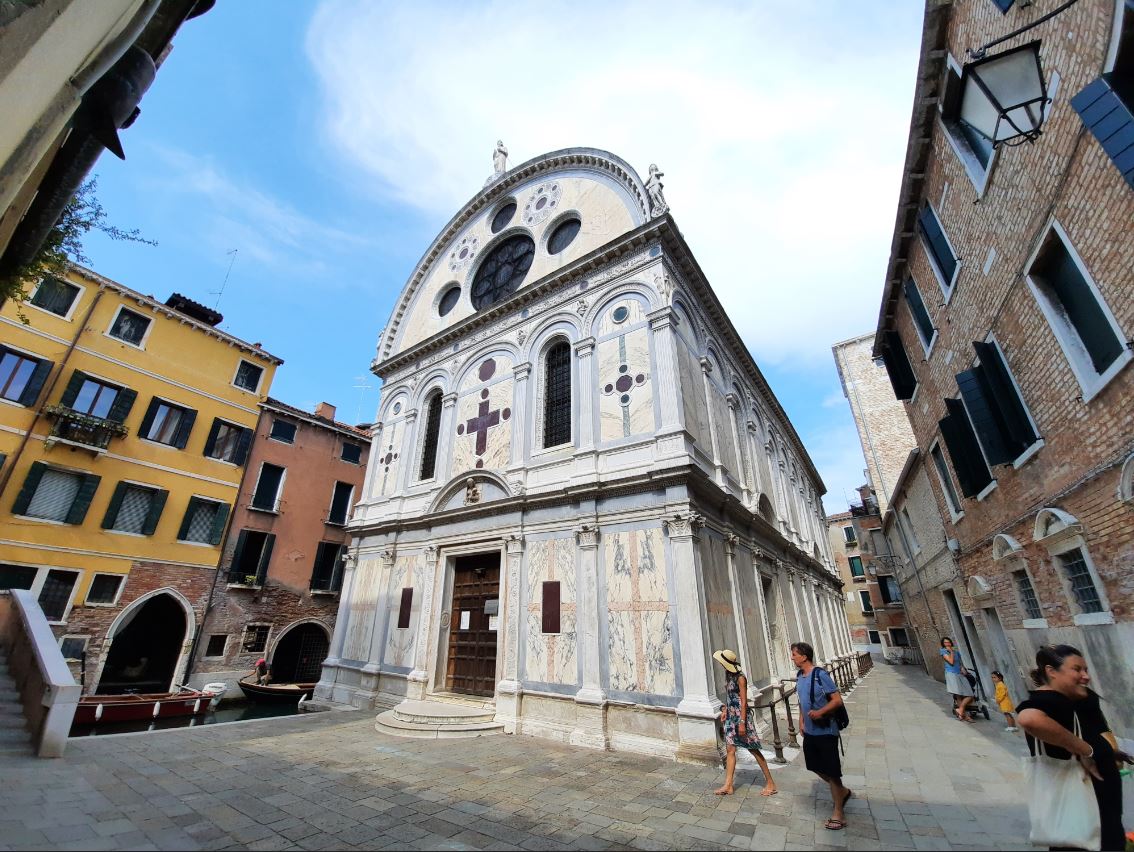

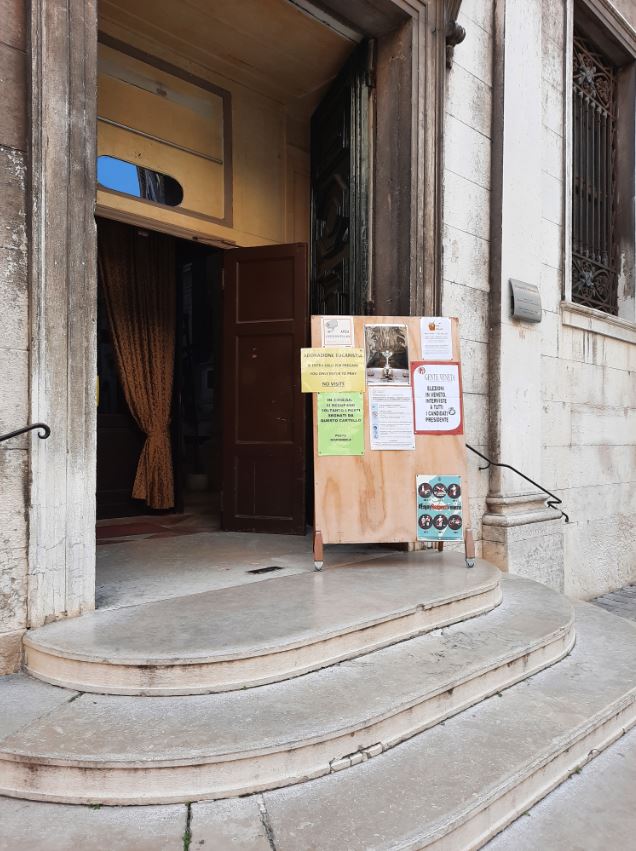
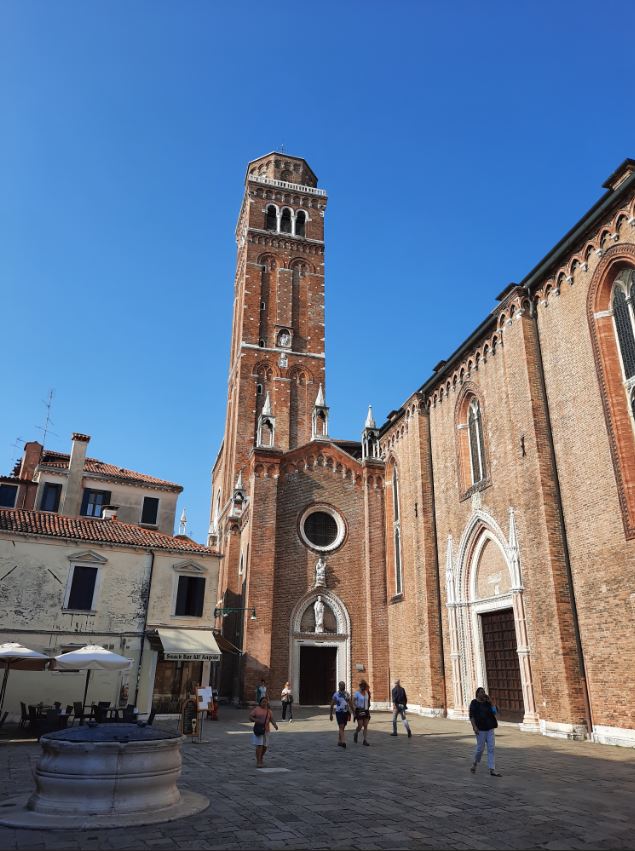

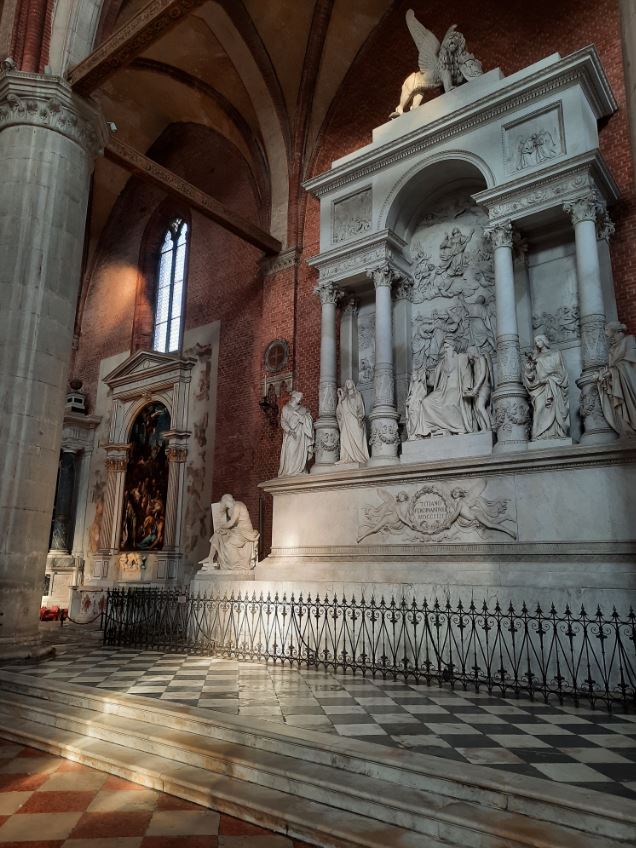


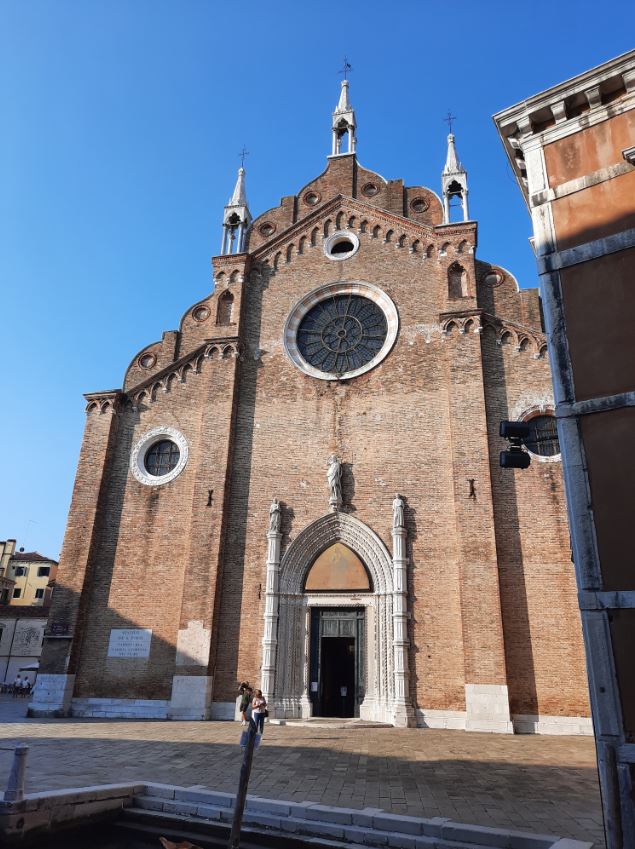
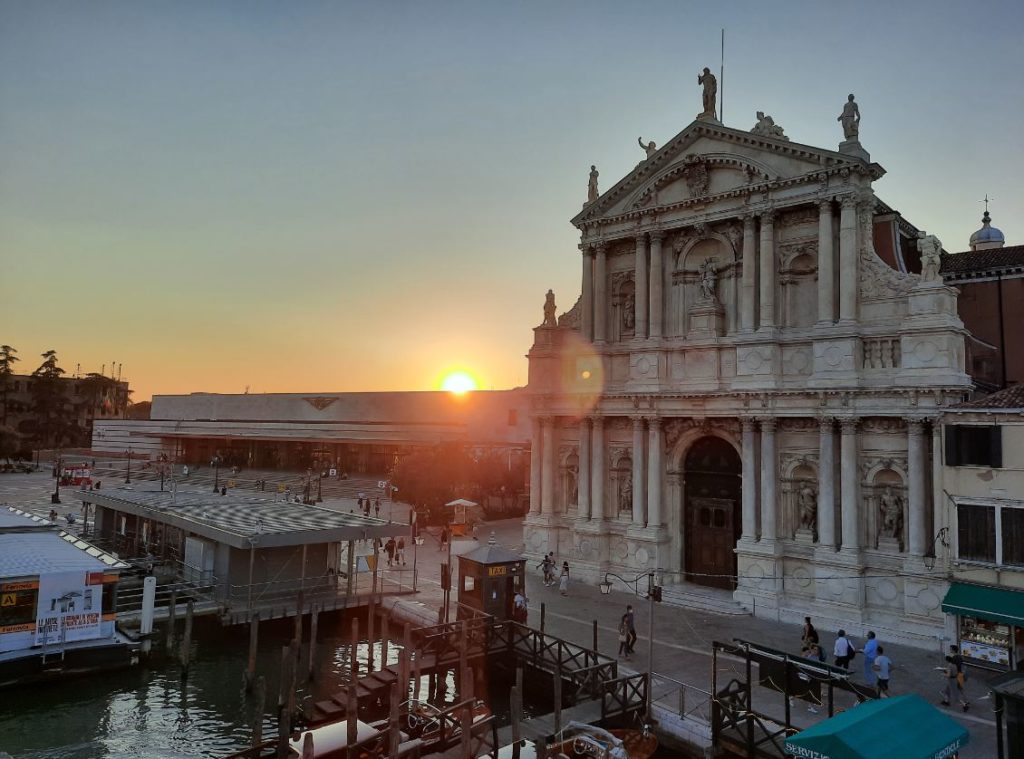
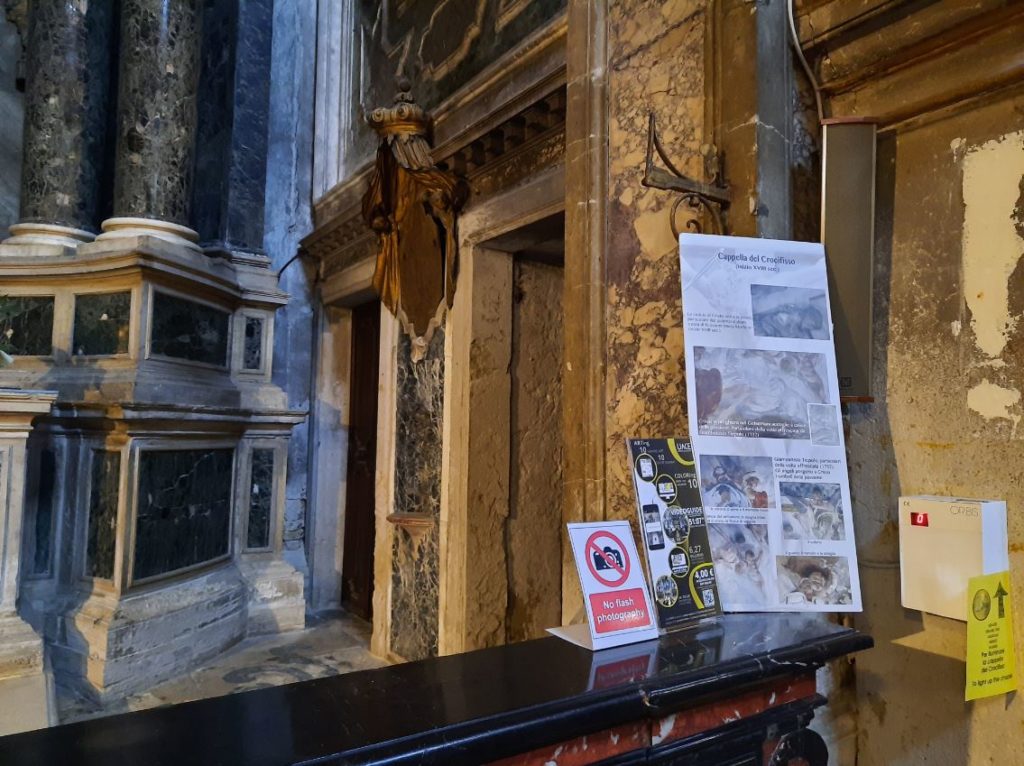
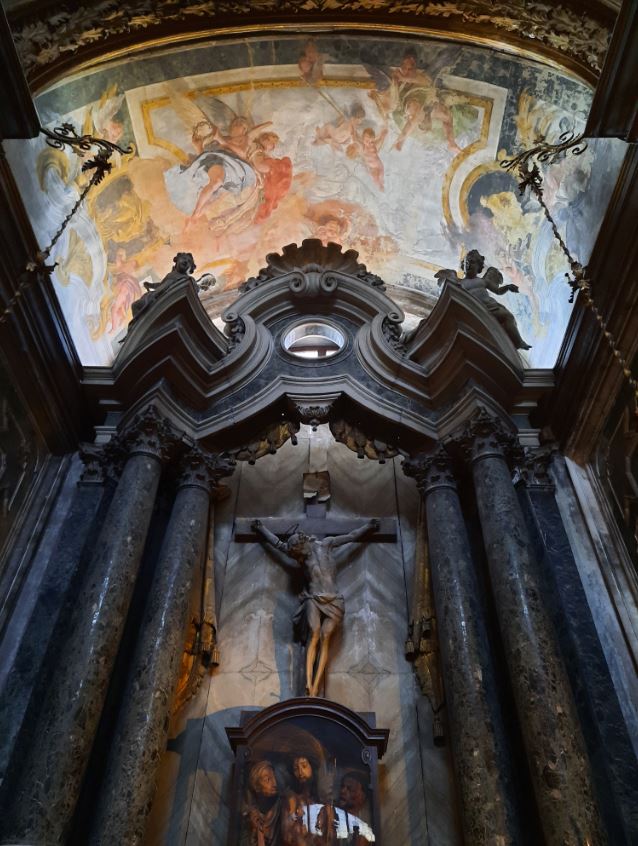

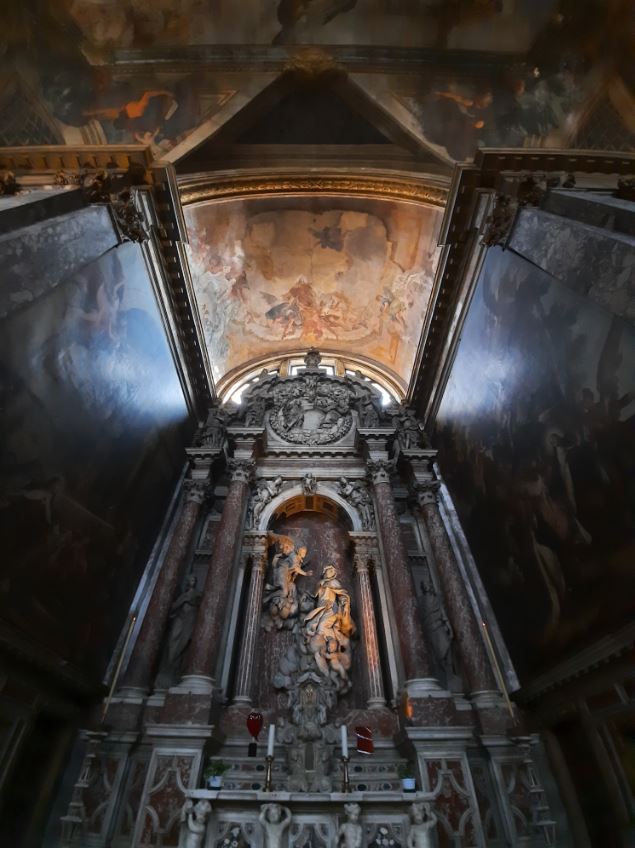
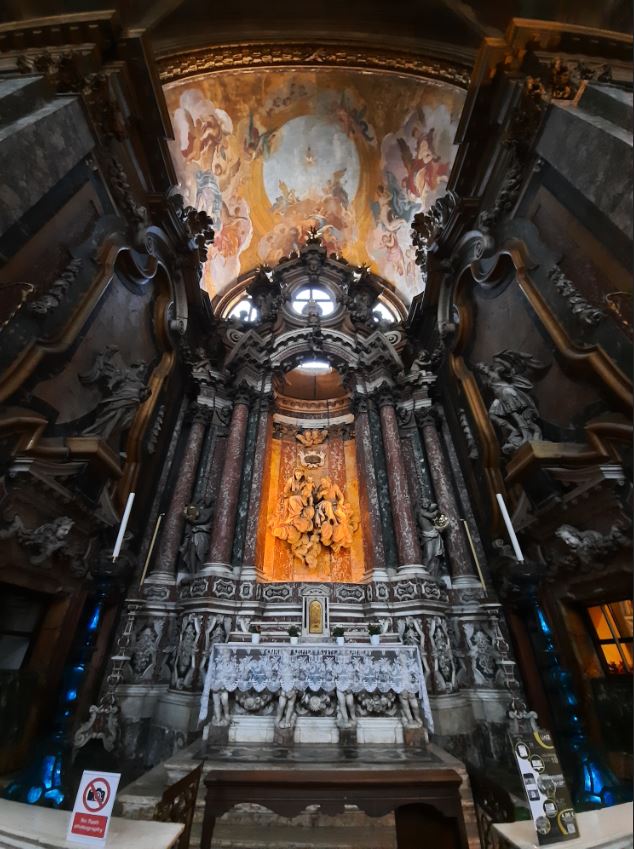
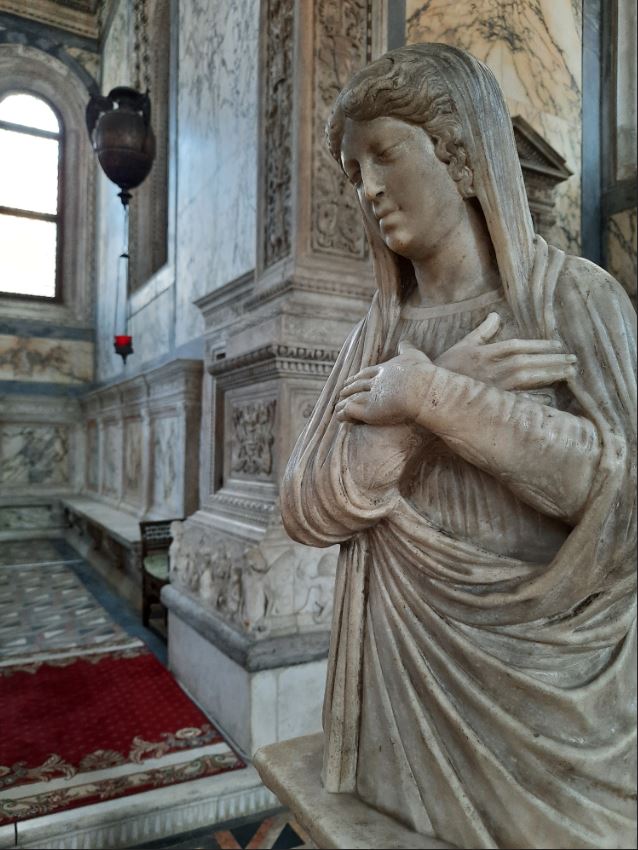

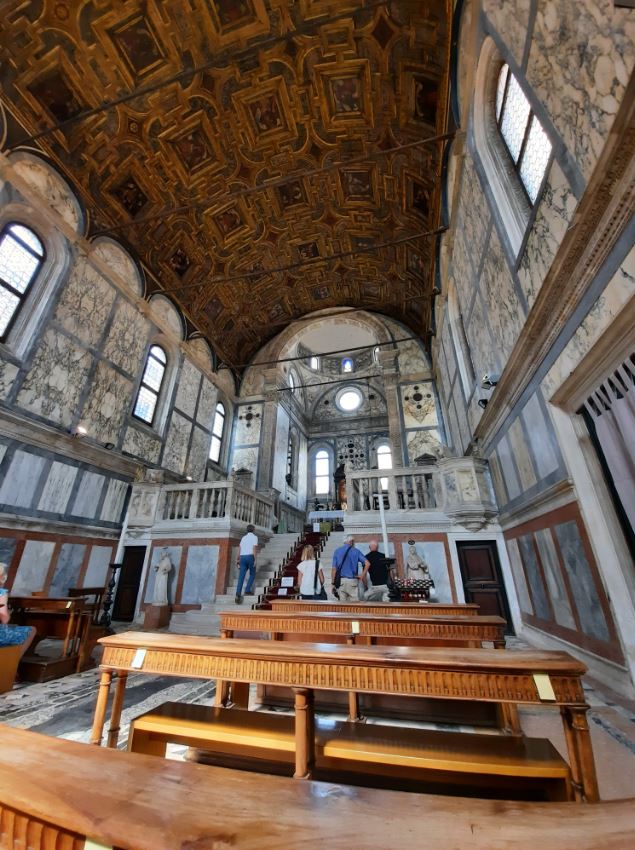
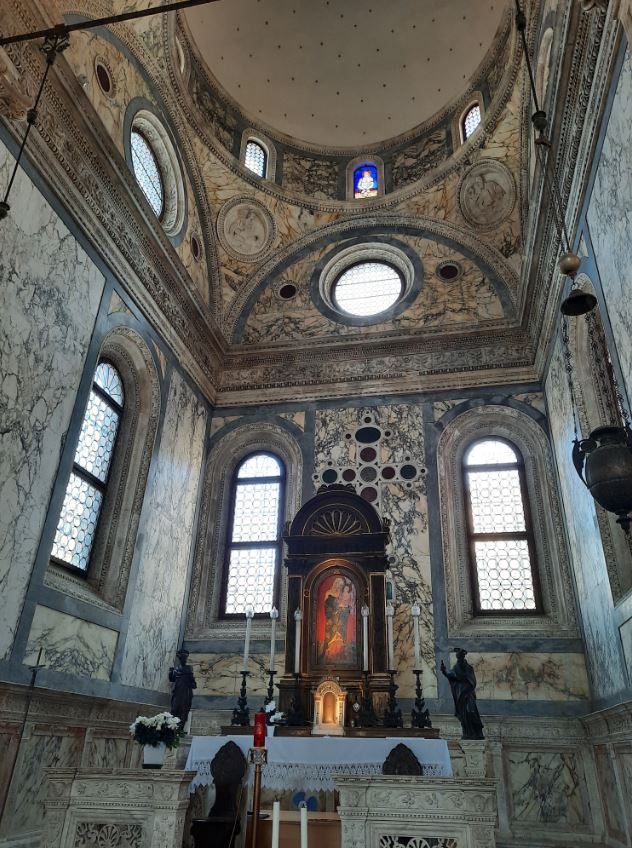
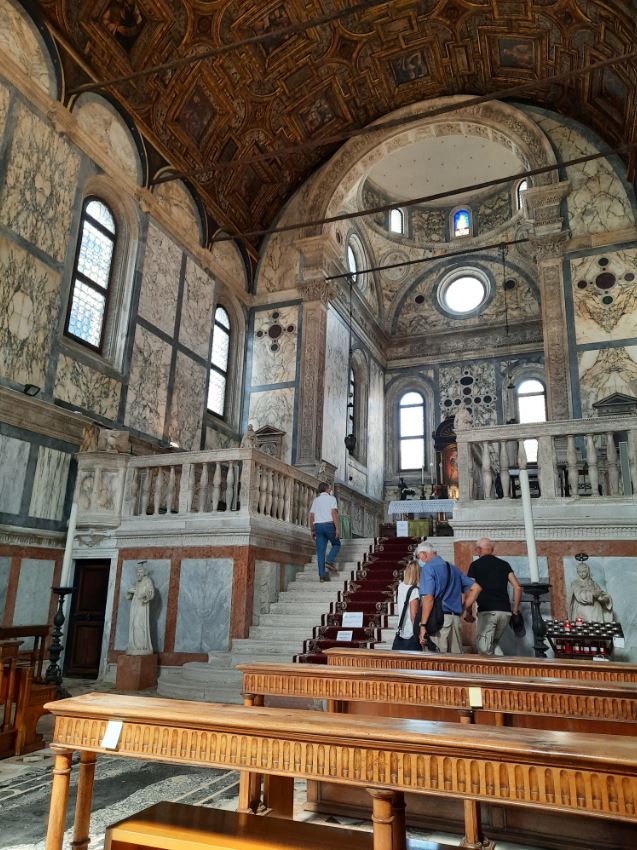
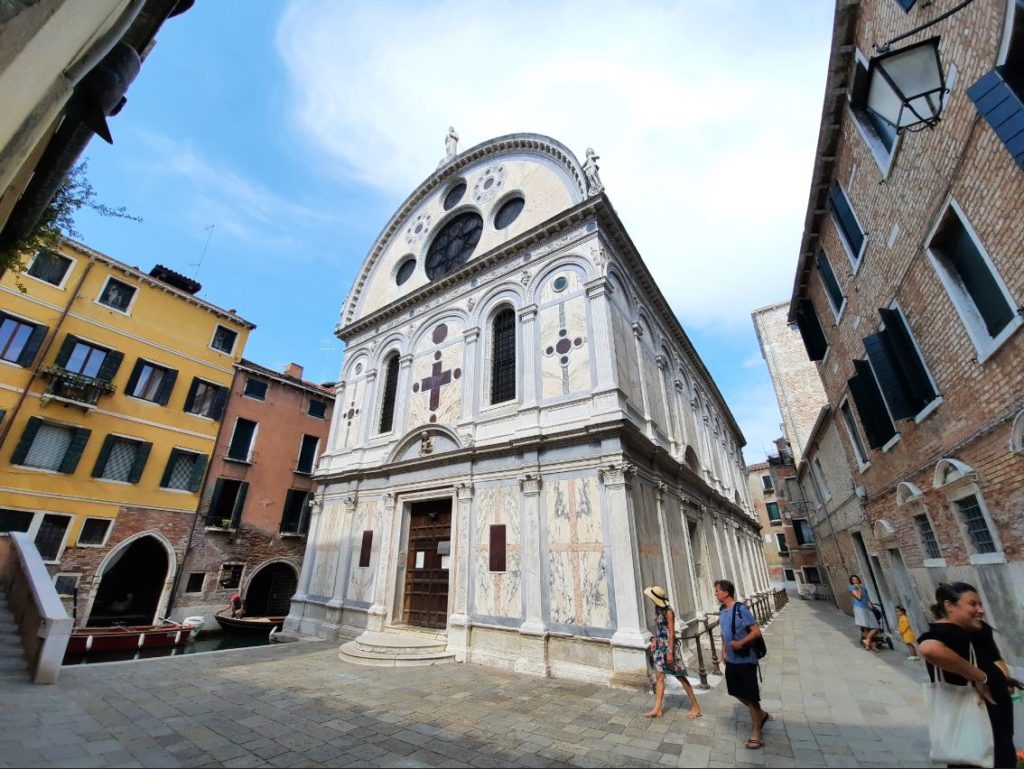
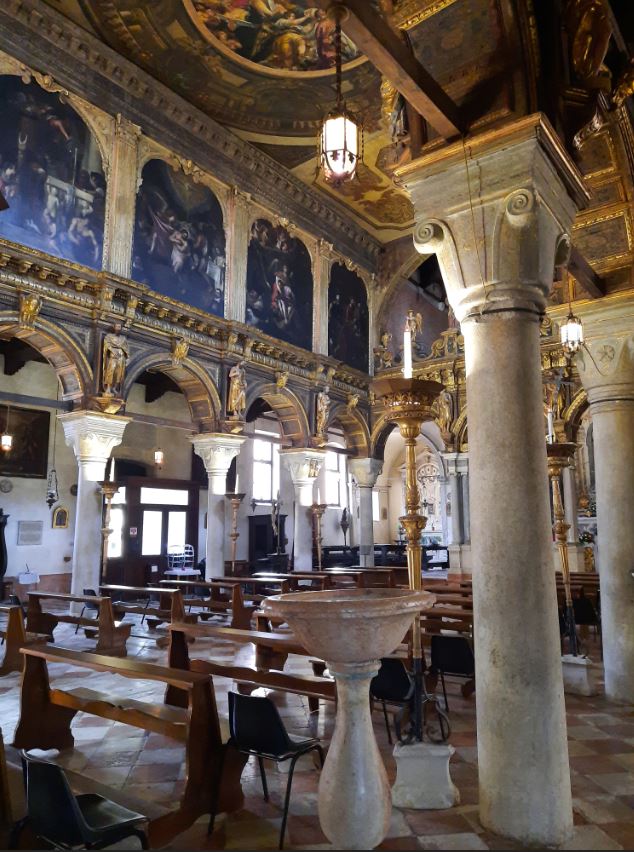
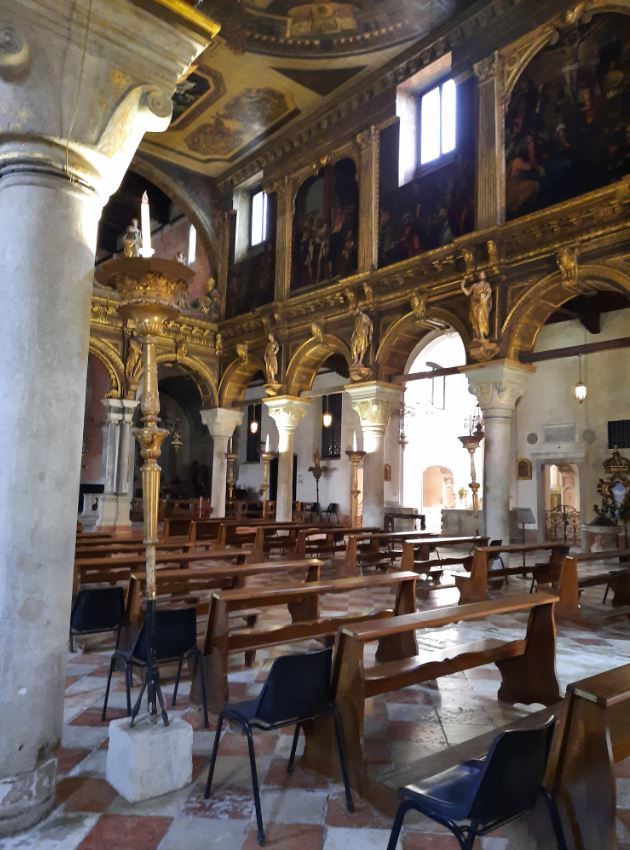
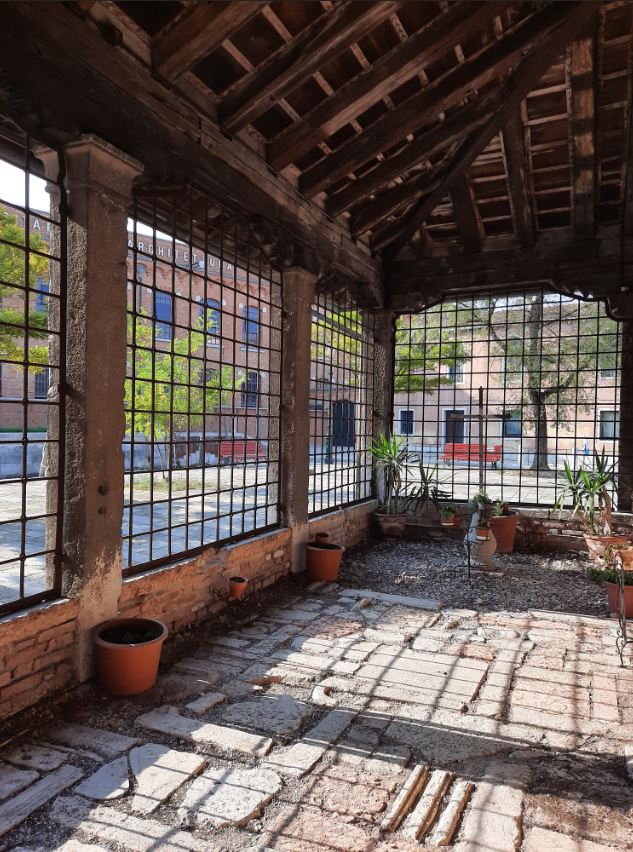
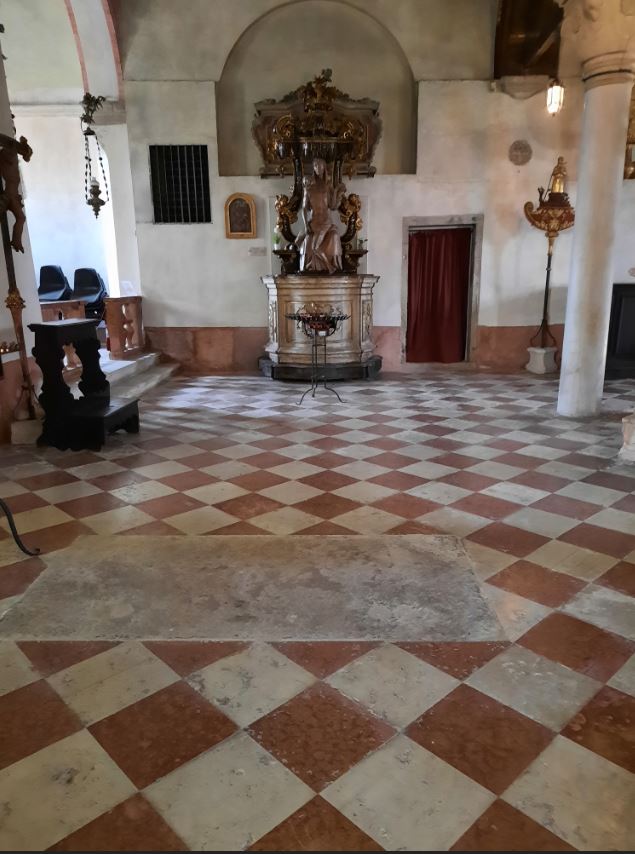
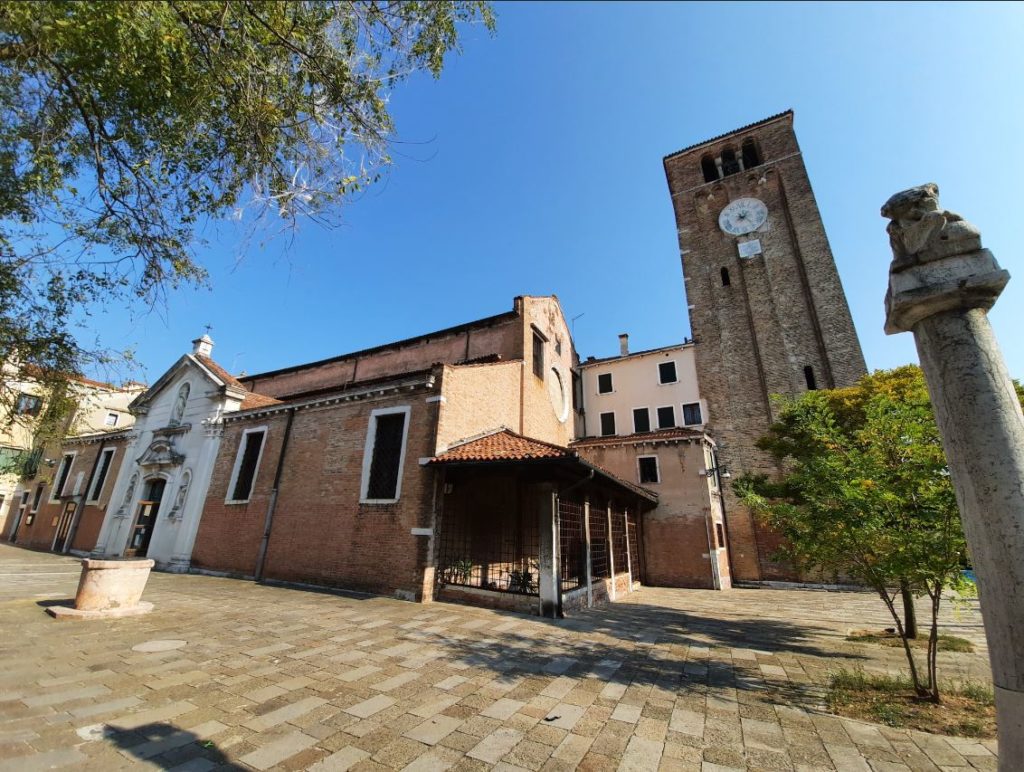
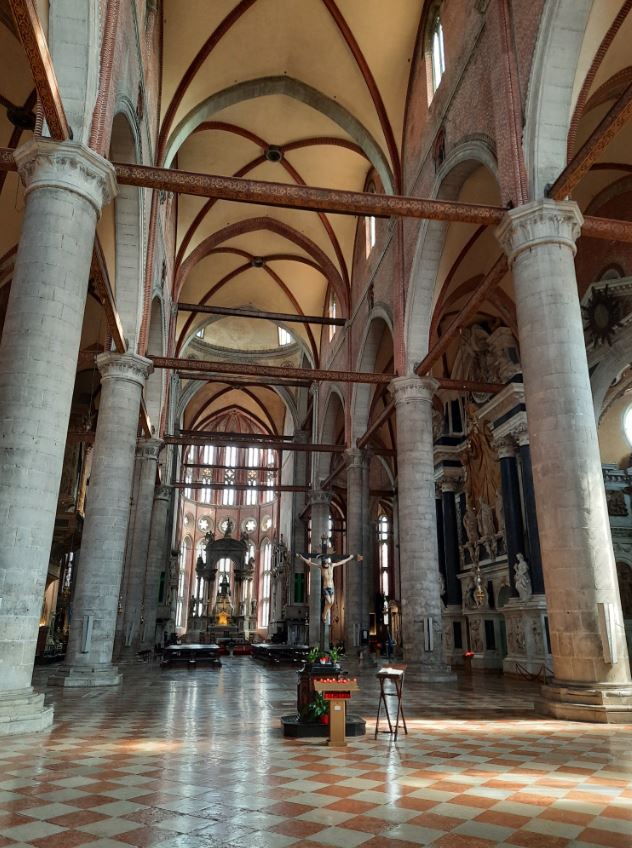
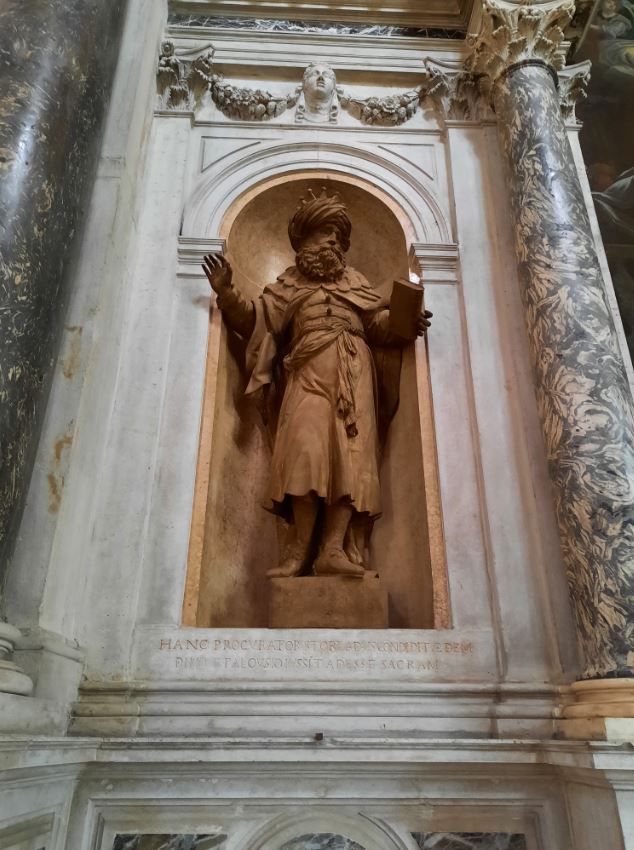
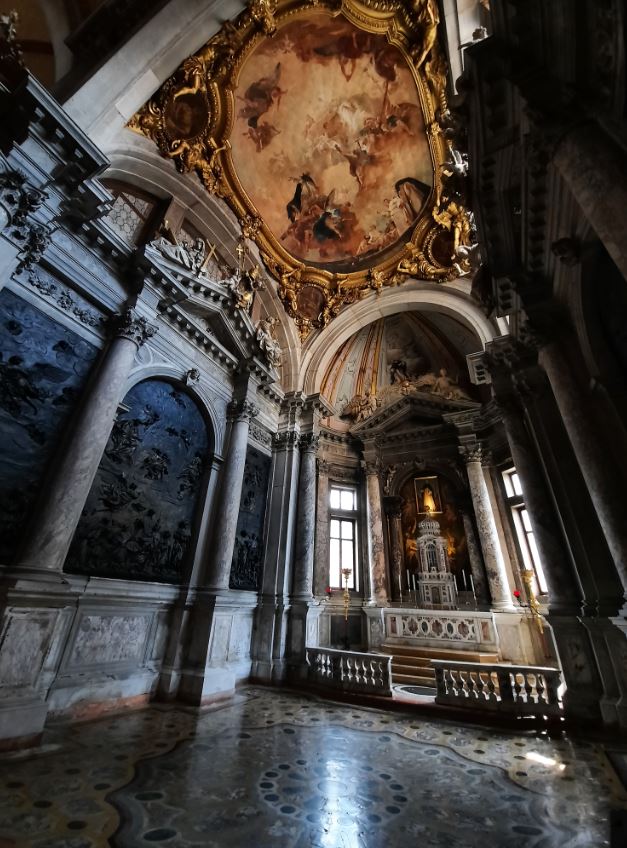
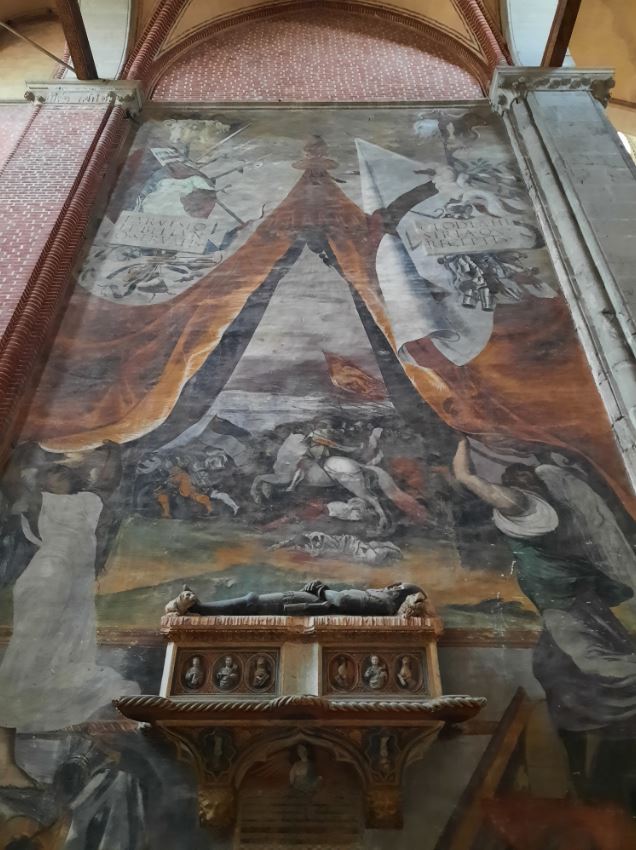
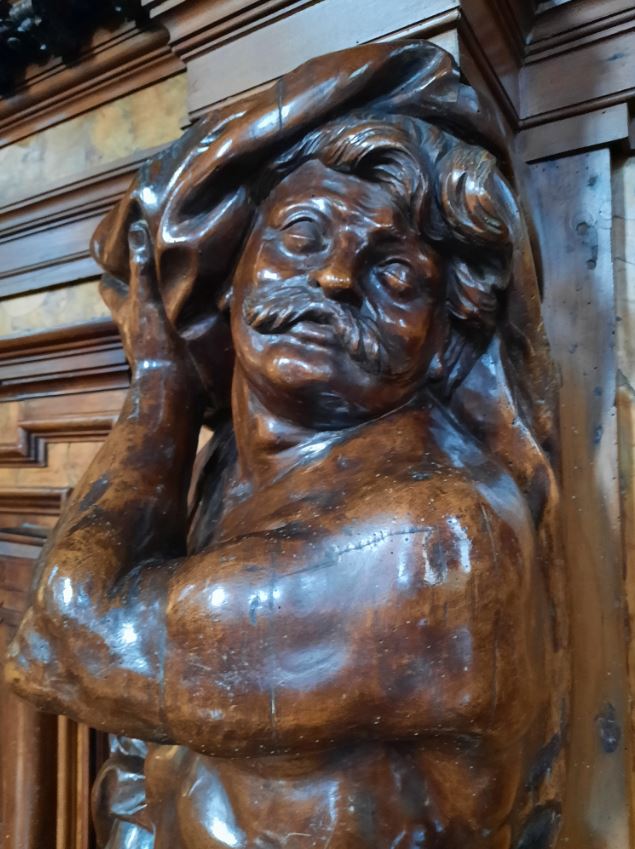
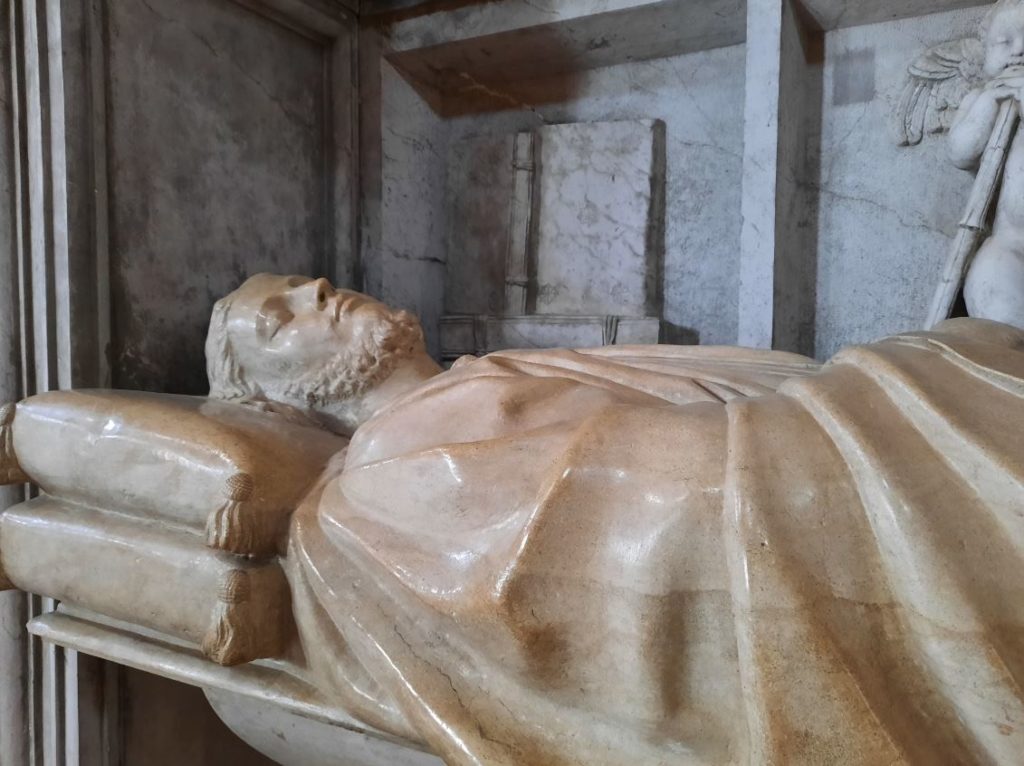
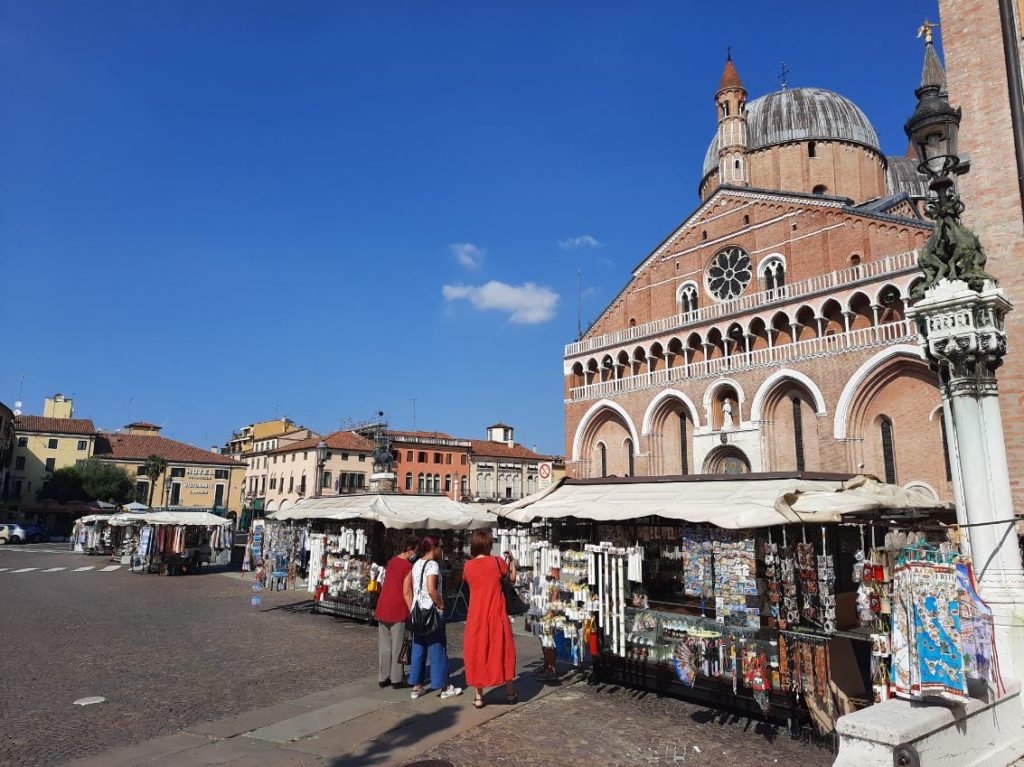
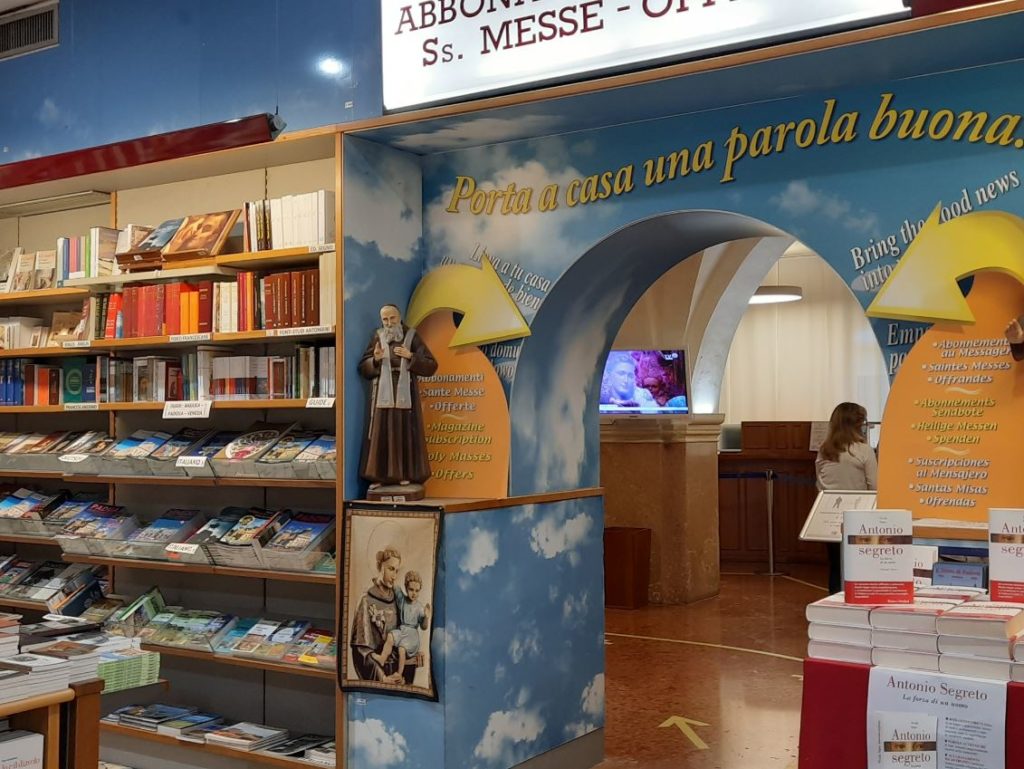
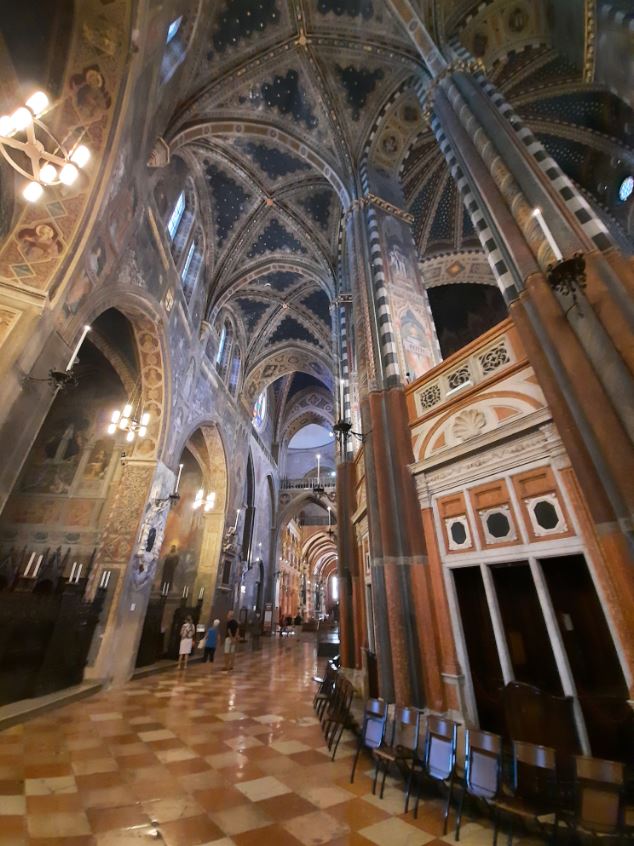
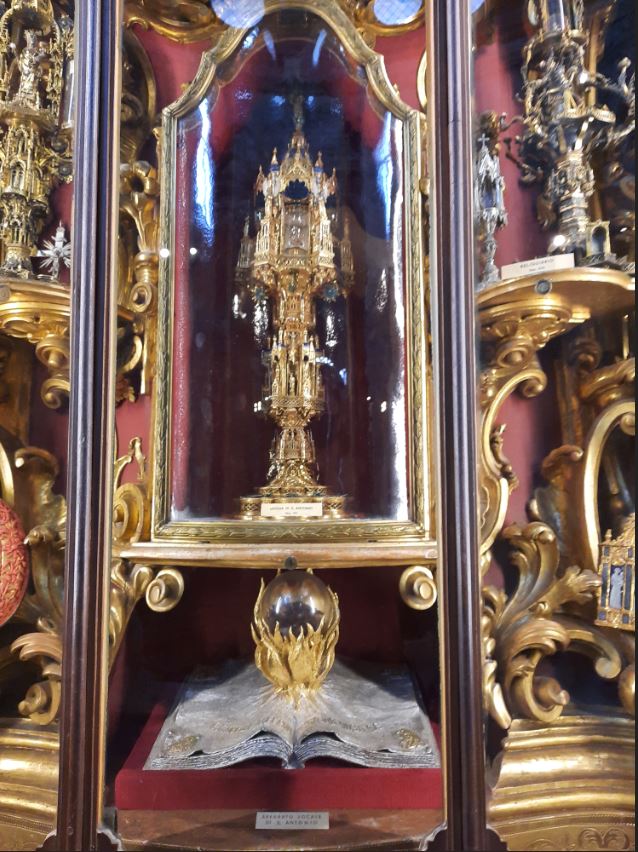
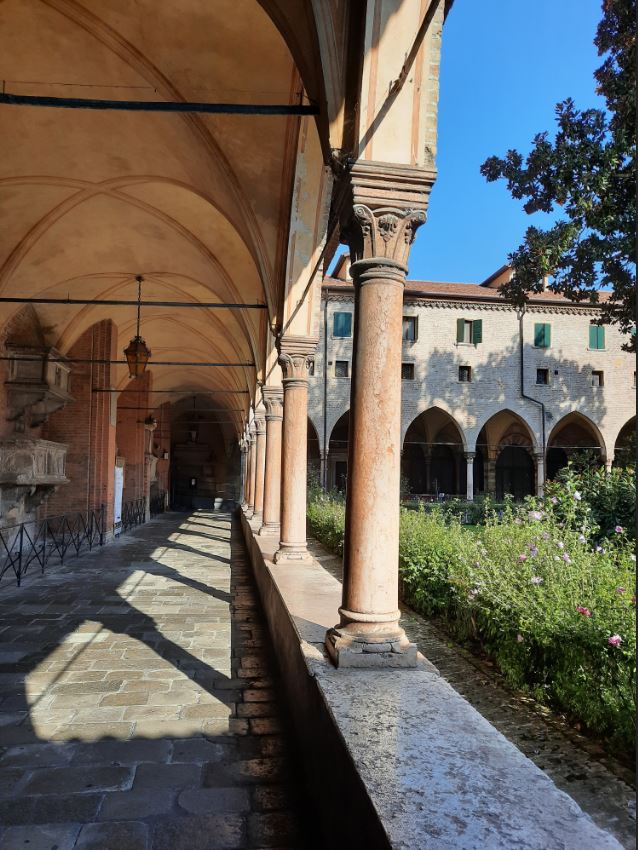

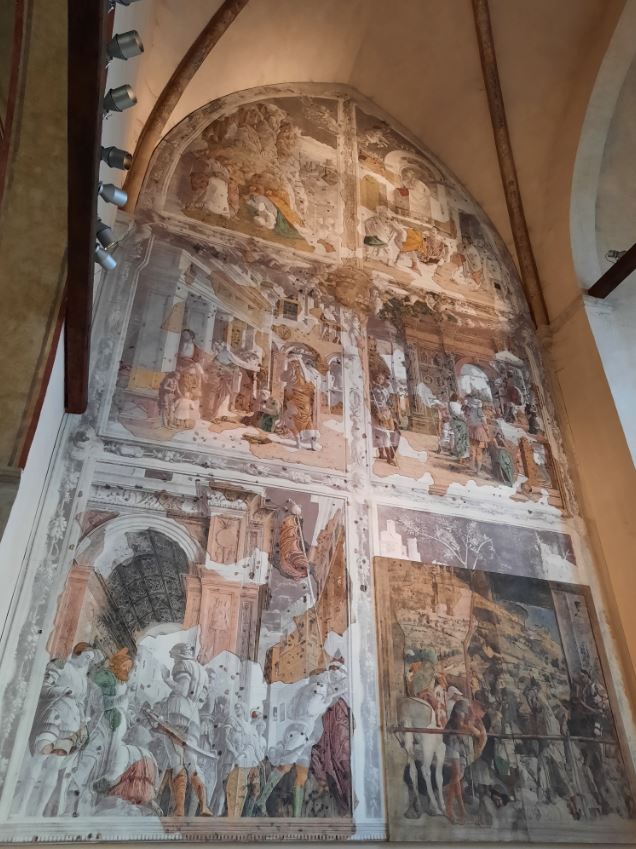
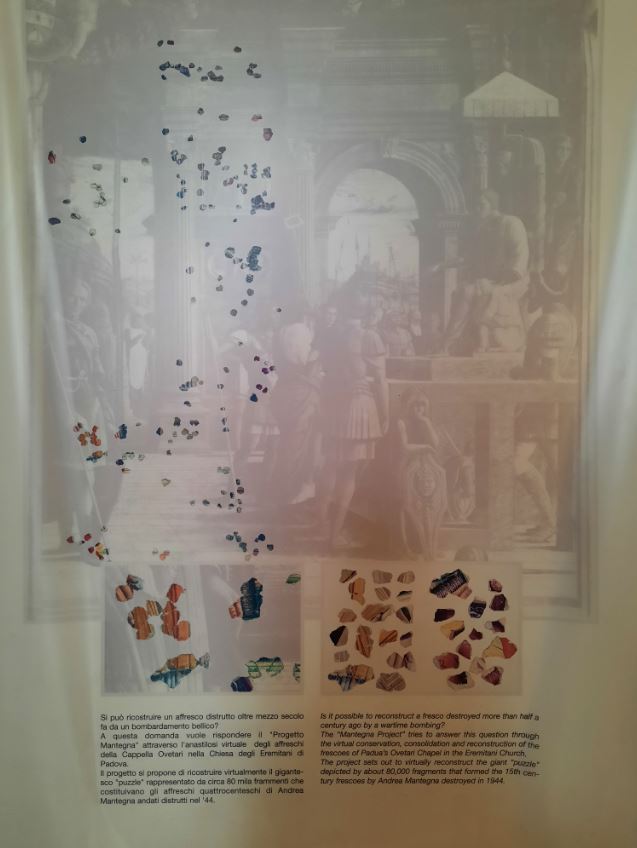
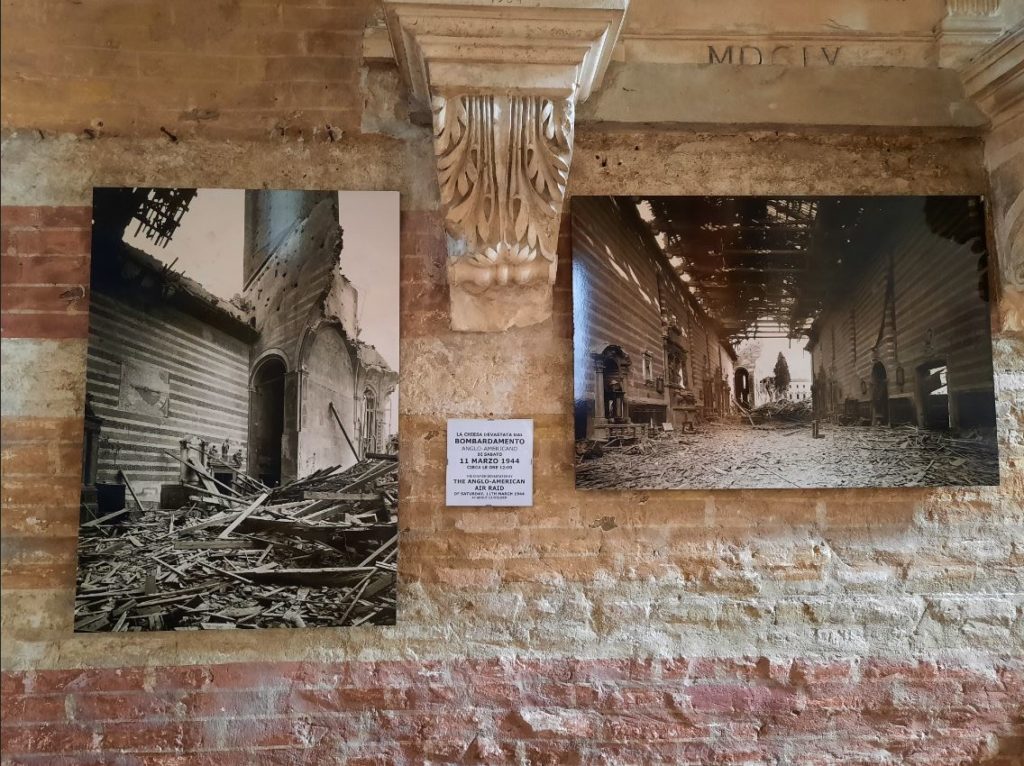
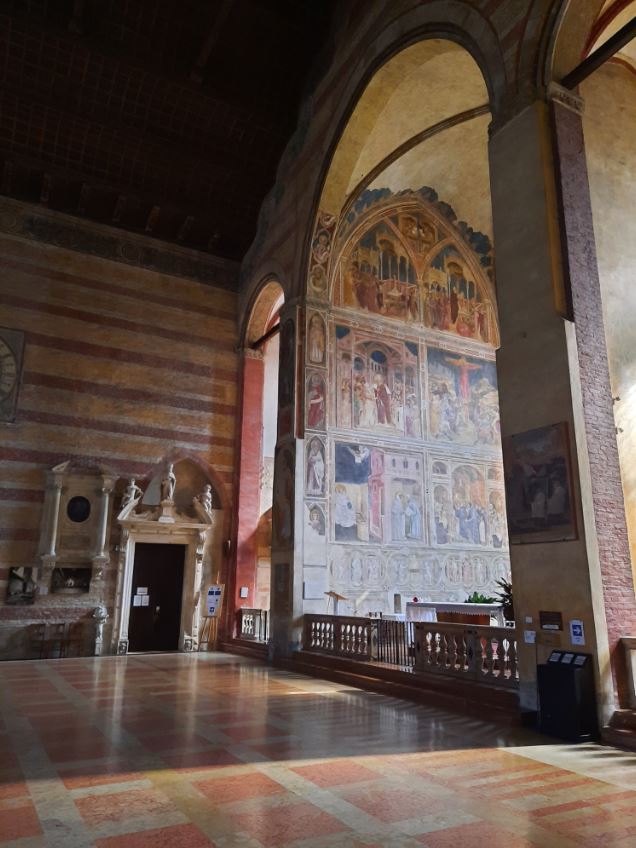
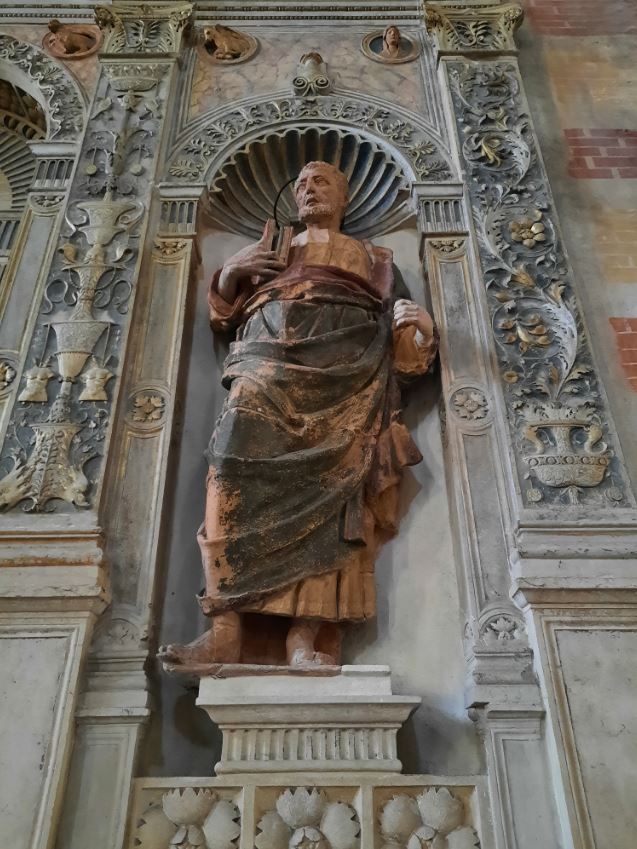
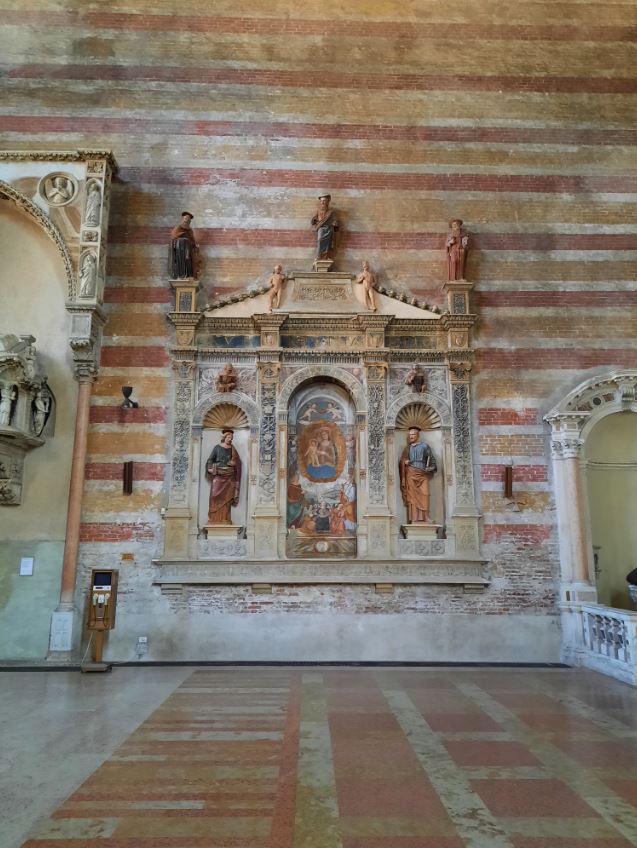
2 thoughts on “The Covid Diaries 34, Venice Edition: Churches of Venice and Padua”